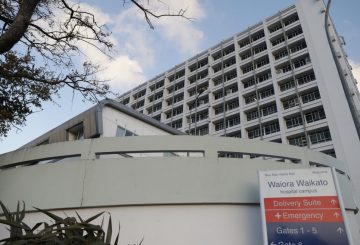Ang tsismis ay isang karaniwang pangyayari sa mga lugar ng trabaho, na madalas na nakikita bilang isang paraan upang maipasa ang oras. Gayunpaman, ang mga pag-uusap na ito ay maaaring may mas malaking epekto sa ating mga relasyon sa trabaho kaysa sa iniisip Ang epekto ng tsismis ay maaaring maging positibo o negatibo, depende sa kung paano binibigyang kahulugan ng taong naririnig ng tsismis ang mga hangarin ng tsiper.
Ang tsismis sa lugar ng trabaho, na hindi pormal na pag-uusap tungkol sa mga kasamahan na hindi naroroon, ay madalas na nakikita bilang hindi produktibo o nakakapinsala Ngunit ang kamakailang pananaliksik ay nagpapakita ng mas kumplikad Ang ilang mga pag-aaral ay nagmumungkahi na ang tsismis ay maaaring humantong sa pagkakaibigan, habang ang iba ay sinasabi na maaari itong Ipinapakita ng aming pananaliksik na ang mga magkasalungat na natuklasan na ito ay maaaring dahil sa isang hindi pagkakaunawaan sa papel na ginagampanan ng tsismis sa pagbuo ng
Nakatuon kami sa mga taong naririnig ng tsismis at tinanong kung paano nila nakikita ang mga palitan na ito at kung ano ang epekto nito sa kanilang mga relasyon sa mga kasamahan. Gumamit kami ng tatlong konsepto upang maunawaan ang tsismis sa trabaho Ang “pananaw ng palitan” ay nagmumungkahi na ang tsismis ay nag-uugnay sa mga katrabaho sa pamamagitan ng isang proseso ng give-and-take, kung saan ibinabahagi ang impormasyon bilang kapalit ng suportang Tinitingnan ng “reputational information view” kung paano huhubog ng tsismis ang opinyon ng tagapakinig tungkol sa taong pinag-tsismis. Ang “tsismis valencia” ay tumutukoy sa kung positibo o negatibo ang tsismis.
Sinuri ng aming pananaliksik kung paano nakakaapekto sa pananaw ng tagapakinig sa taong nagbabahagi ng tsismis. Nakolekta namin ang data sa pamamagitan ng nakasulat na ulat at panayam, na nagbigay sa amin ng detalyadong paglalarawan kung paano nakakaapekto sa mga insidente ng tsismis ang mga relas
Ipinapakita ng aming mga natuklasan na napakahalaga kung paano nakikita ng tagapakinig ang tsismis. Kung naniniwala ang tagapakinig na ang tsiper ay nagiging tunay at matapat, ang tsismis ay maaaring humantong sa isang bagong pagkakaibigan o palakasin ang umiiral na isa. Kapansin-pansin, nalaman namin na ang negatibong tsismis ay maaaring maging mas epektibo sa pagbuo ng pagkakaibigan kaysa sa positibong tsismis, hangga’t naniniwala ang tagapakinig na ang tsiper ay tapat.
Kung naniniwala ang tagapakinig na nagbabahagi ng tsiper ang kapaki-pakinabang at tumpak na impormasyon para sa pakinabang ng iba, tumataas ang tiwala at pinalakas ang mga ugnayan sa trabaho. Gayunpaman, kung ang mga hangarin ng tsiper ay nakikita bilang paglilingkod sa sarili, bumababa ang tiwala at mababa ang mga pagkakataong magkaroon ng pagkakaibigan.
Ipinapakita ng aming pag-aaral na ang tsismis ay hindi lamang walang pag-uusap, kundi isang mahalaga at potensyal na mapanganib na tool sa lipunan. Madalas kaming tsismis nang hindi iniisip kung bakit natin ito ginagawa, ngunit ipinapakita ng aming pag-aaral na binibigyang pansin ng iba ang ating mga dahilan para sa tsiping. Dahil hindi natin makokontrol kung paano kahulugan ng iba ang ating mga hangarin, mahalagang mag-isip nang mabuti bago magbahagi ng tsismis.





























































